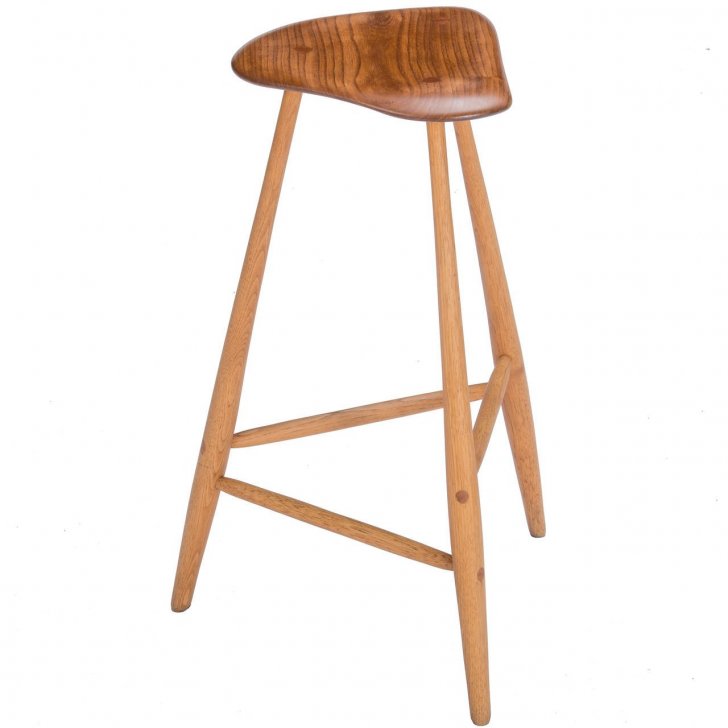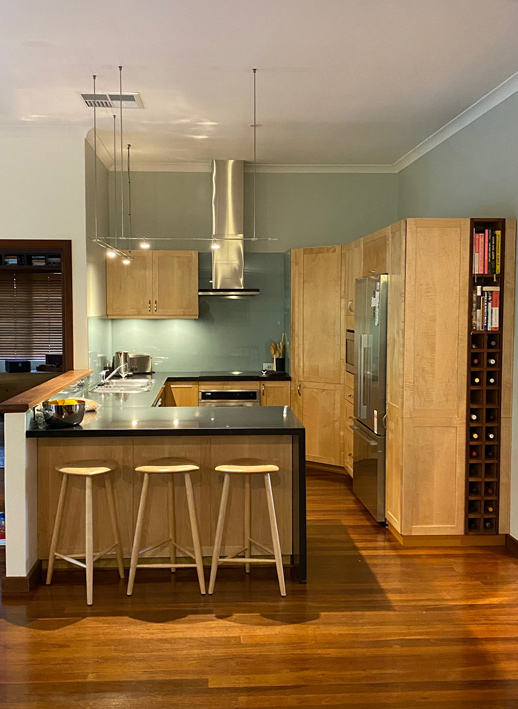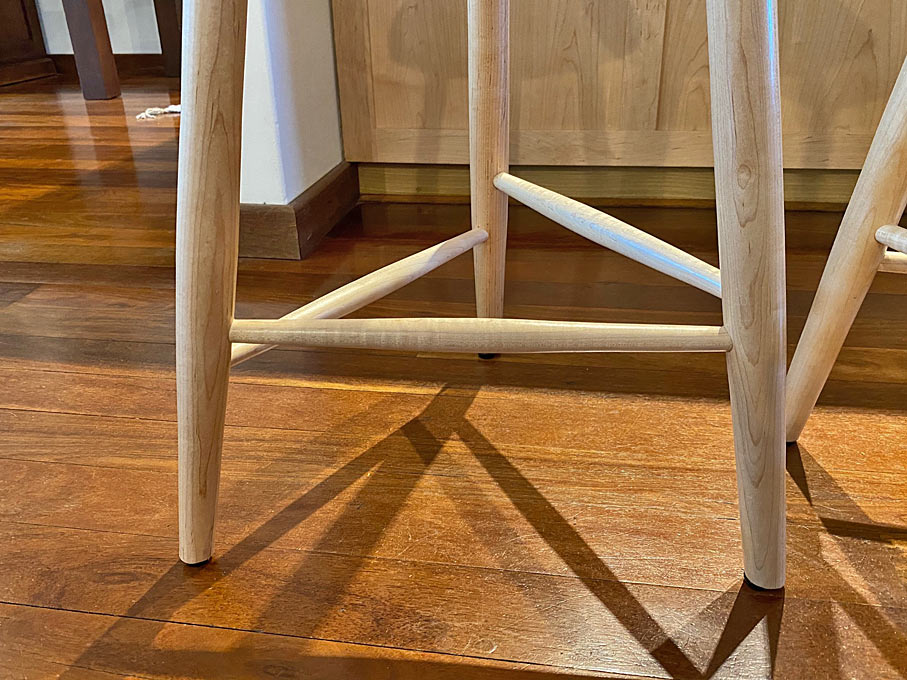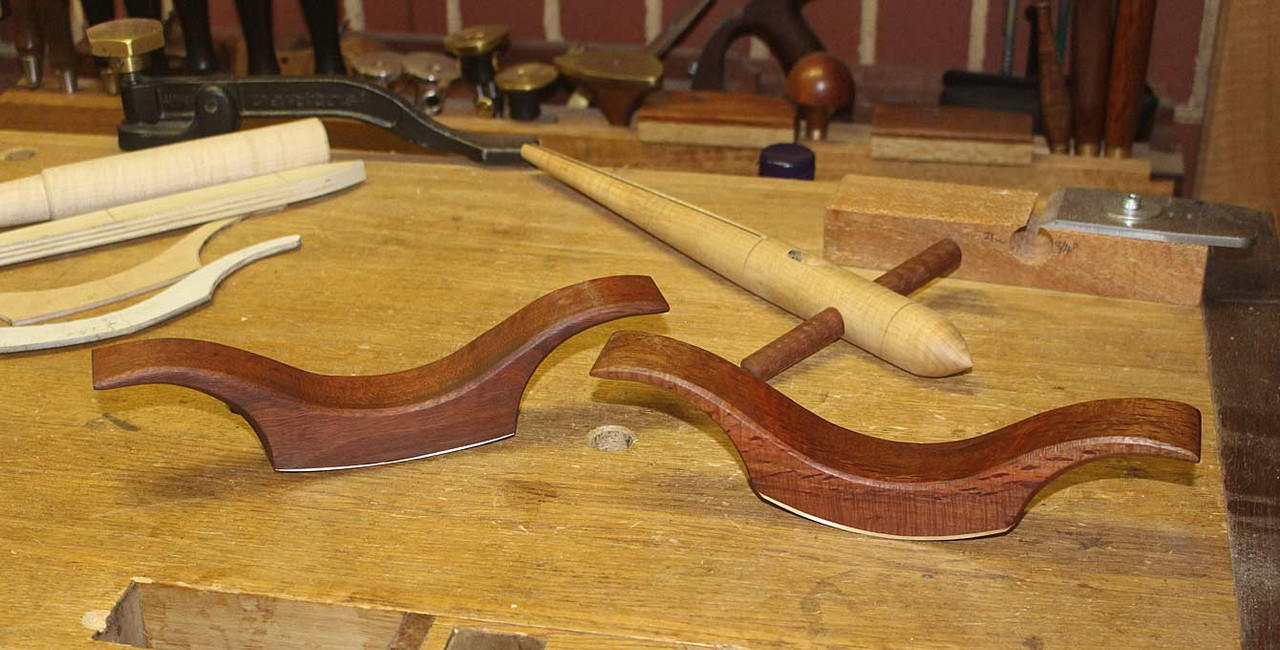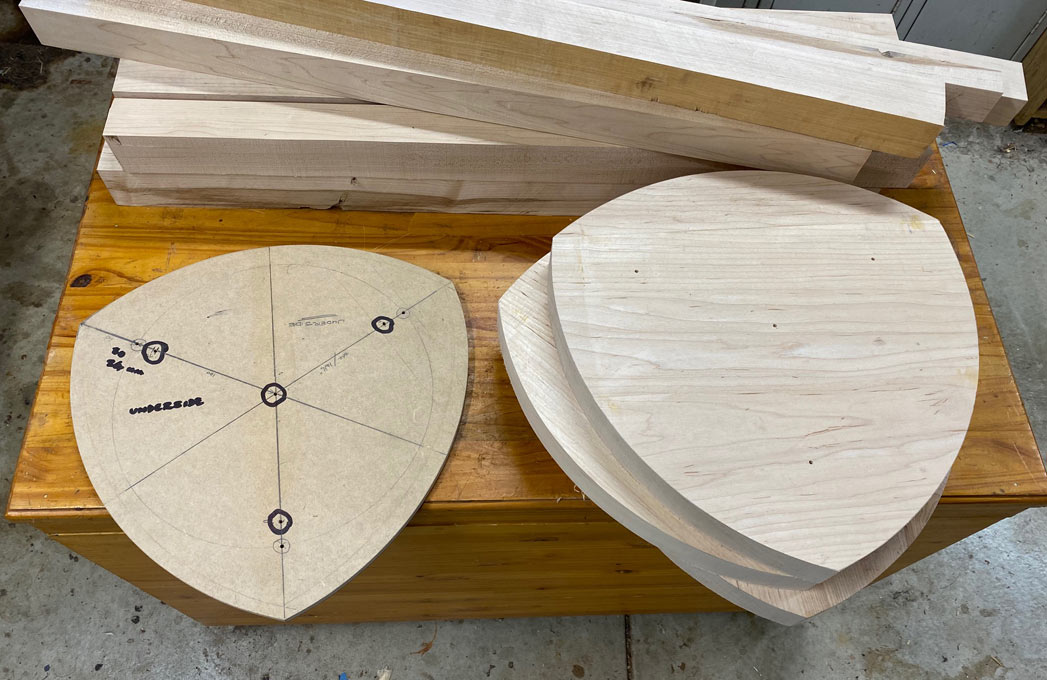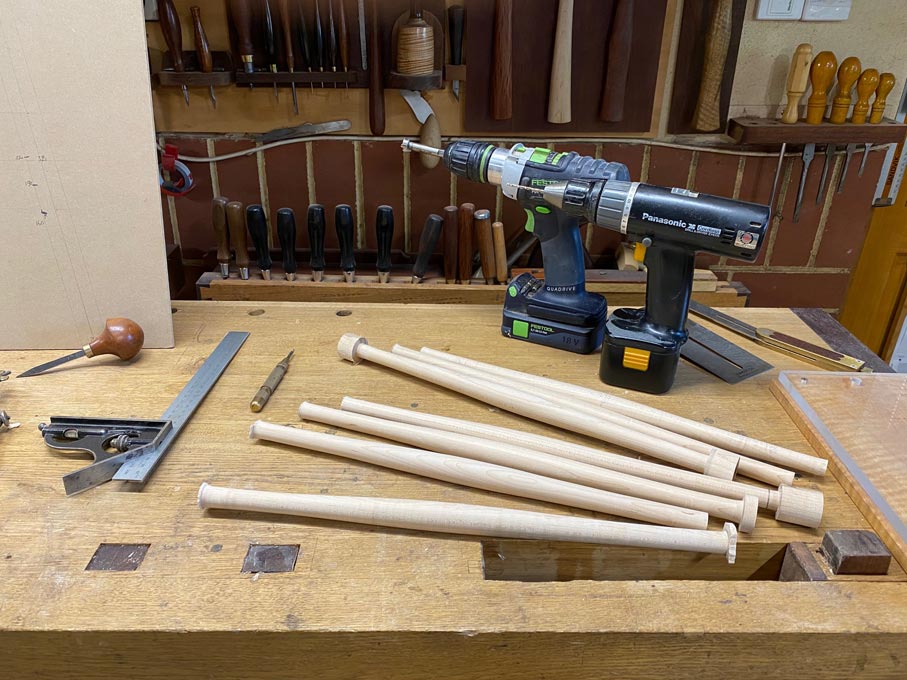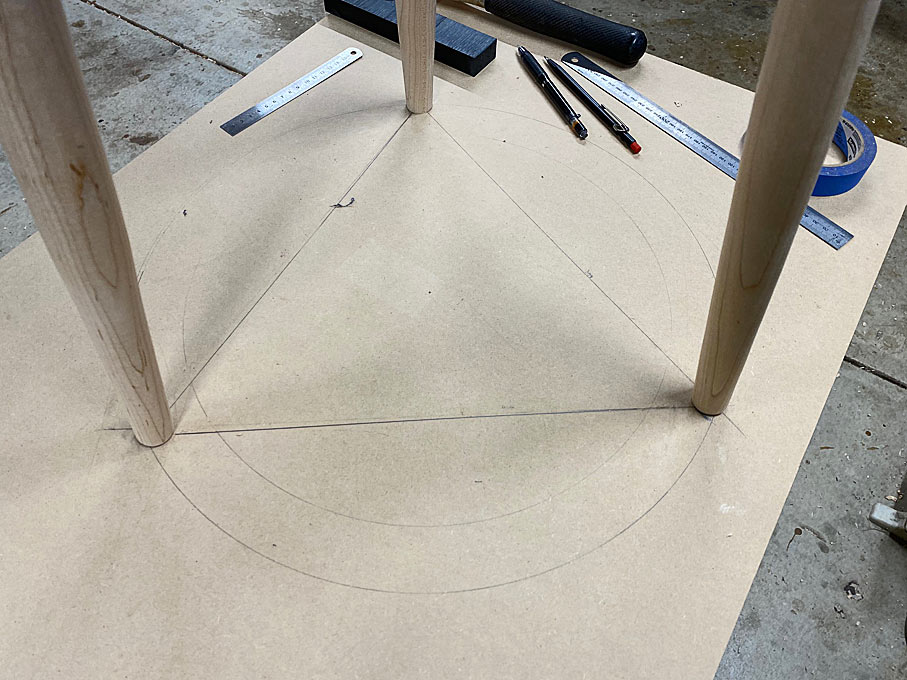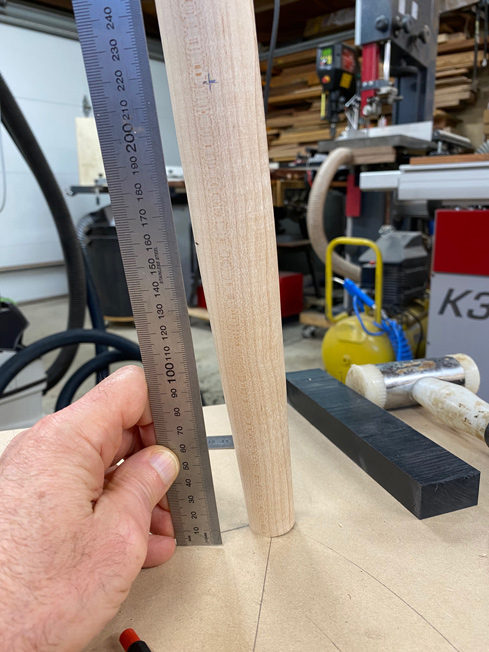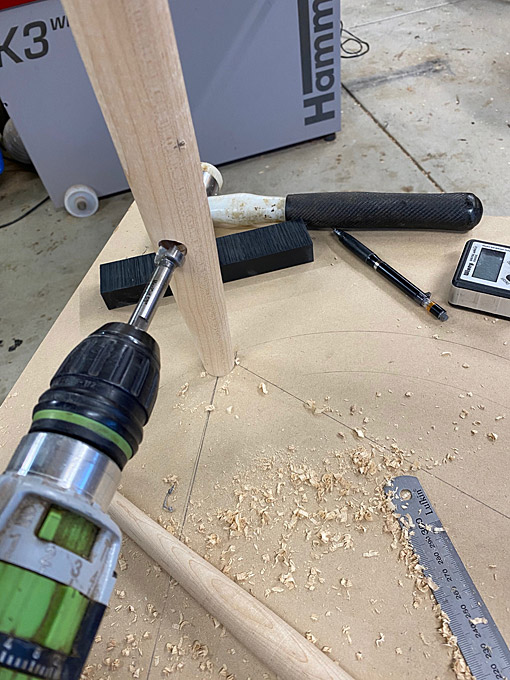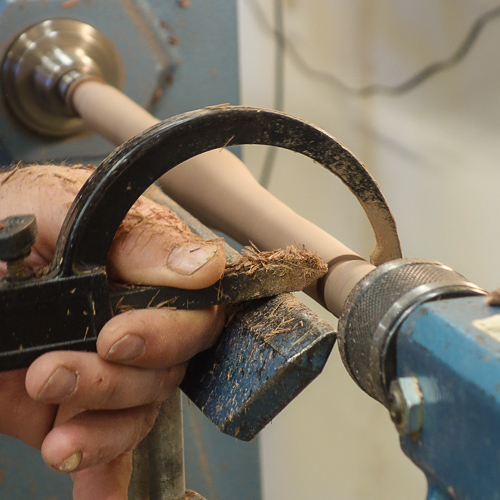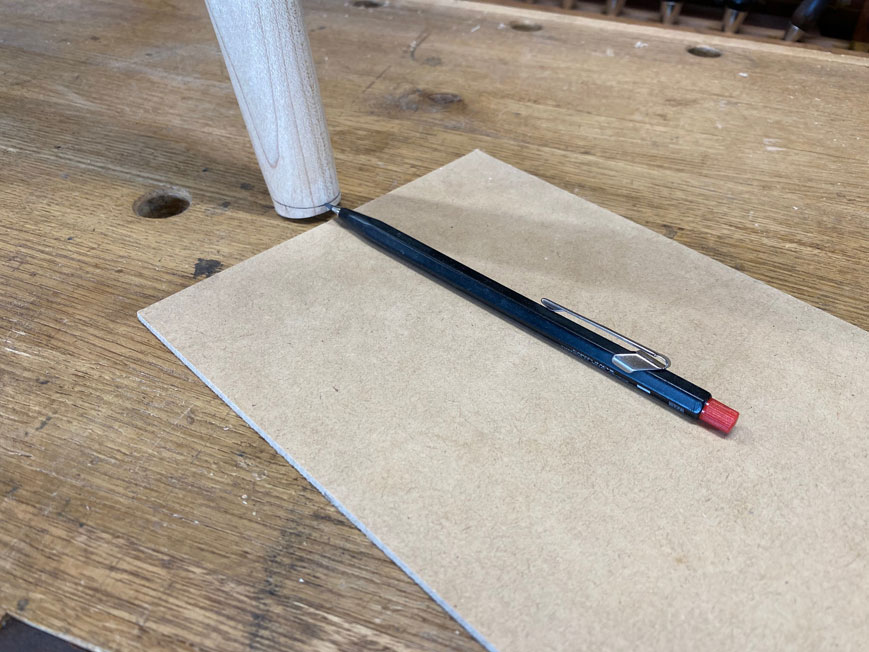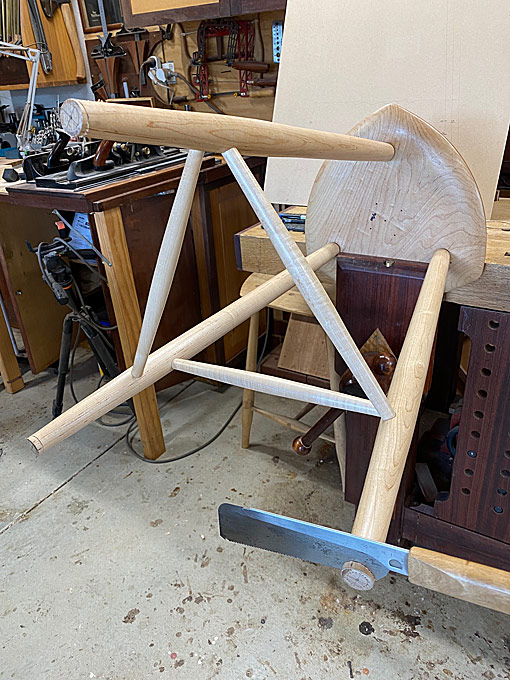I've not made a large number of these stools, more like a half dozen, and so I hardly count as an expert here. There are others on the forums with so much more relevant experience.
Past stools have used a scorp, pull shave and travishers to shape seats, and the legs were drilled with a brace and auger bit. Tenons and mortices were tapered with shop made reamers and tenon makers ...
For this build I decided to go a different route, and combine power and hand tools. One reason was that the wood chosen was Hard Maple, which is a
little more work to excavate than, say, a softwood such as Radiata Pine.
The boards for the seats needed to be glued from two sections as the seats were 14" across, and the maximum I had was 12". I was reasonably successful in disguising this with two of the seats. The thickness of 1 1/2" could have been 1 1/4" and saved some shaving.
The stools ended up 27 1/2" high, and the legs were shaped from 1 1/2" square x 31" long sections.
Below are seats cut and the template used for both the outline and marking the position of the legs ...
I made a simple fixture for production ripping the legs on the slider ...
Later, I built a version of this with an adjustable parallel guide fence. This will rip any width and also taper legs.
The plan was to drill the mortices on the drill press using a 24mm WoodOwl auger for this purpose (no leading screw). These are to be parallel-, not tapered mortices ...
The legs are a 10 degree rake and, being three legs and arranged around essentially a circle, the resultant angle is simply a line to the centre.
Not a lot of skill required here.
More machine work, but some hand working coming in ...
The seats were turned on the lathe. Just a shallow hollow required. The reason for doing it this way was to create an even hollow in what is a three-corned, but round seat ...
While at it, rough turned the legs ..
Finally, the hand tools take over. First it is the drawknife to rough out the tapers on the outside edges ...
Then I had a fun time using different spokeshaves (I had not had a chance to use any in some months, so this was making up for lost time) ..
The Stanley #84 and #85 is an amazing shave (Jim, I believe that you gave me these). These work on the same principle as a travisher: the toe has a slight (2-3 degree) taper, which enables the depth of cut to be altered with the angle it is held to the work piece. The shaving done here is largely end grain, and the other shave to shine was the Veritas LA.
The hollowed seats were further shaped and smoothed with a travisher ...
Then back to shaves for shaping the sides. The HNT Gordon can shave into the grain, while the lower angle of the LN leaves a finer finish ...
I smoothed the surfaces with a scraper ...
... however Lynndy disapproved and wanted a sanded finish, which is how it ended.
There are a few gaps in the photos collected, such as the shaping of the legs. Not a lot here other than they taper from 25mm at the base, to 38mm at the swell, and then down to 30mm at the start of the tenon. The tenon is 24mm.
Here is a shot of the three stools with legs inserted ...
... and another with one set of stretchers in place ...
If anything, it is the fitting of the stretchers that was one of the more exacting parts of this build.
Over-length stretchers. These are 25mm at the centre and will have 5/8" tenons ..
The steps in fitting the stretchers were ..
Firstly, I created a template for the positions of the legs, drawing these onto a sheet of MDF ...
The lines joining the legs provided a guide for drilling.
The height of the legs were marked. These were at 160mm, 190mm and 220mm. It is advisable to do these one set at a time, that is, drill the mortices, and insert the stretcher for one set of legs, then move to the next height. The reason: it is a little like fitting mitres - three corners are easy, but the last might require a little massaging. Insert the stretchers for two sets of legs, and then the last set can be marked accurately.
Once the mortices are drilled (halfway), then the stretchers are measured for length. The ends of the stretchers can be turned exactly to 5/8". A great tool for this is the Sorby Sizing Tool Set (photo from Elia Bizzarri) ...
When glueing up, the stretchers-into-legs must be inserted first. Only then is it possible to do the leg tenons-into-seat mortices. Once the seat goes on, the structure is triangulated, and it becomes incredibly rigid. The stretchers would be impossibly be come out unless the seat is removed.
The last task is to level the legs ...
.. and saw them off ...
The stools were finished in one coat of Ubeaut Hard Shellac (for a little amber), and then three coats of General Finishes water-based poly were rubbed on. This finish is hard-wearing and does not yellow.
Regards from Perth
Derek

